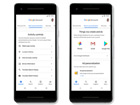Les développements les plus intéressants du premier semestre ont porté sur le software-as-a-service, tandis que le marché de l’infrastructure s’est concentré. Quant à l’IoT, l’IA et le machine learning, ils s’imposent comme des facteurs de différenciation.
Source de l’article sur ZDNet
When professional motorcycle stuntwoman turned developer Leah Petersen switched from Jenkins to GitLab, she was a bit nervous to say the least. Having only worked in tech for nine months, the Samsung SDS engineer was not enthused about the prospect of having to learn a new application after feeling like she had "just started to get competent" with Jenkins.
After a self-described mini pity party, she dove into GitLab head first, jumping into a few big-ticket projects to get a handle on the landscape. Within a few short months, Petersen was so impressed by her GitLab CI/CD experience that she felt the need to shout her newfound "love" for continuous integration and continuous delivery from the virtual mountaintop of her blog.
It’s that nagging feeling that you’ve somehow stumbled into your plum position by accident and you’ll be found out at any moment. And when they come to show you the door, you’ll think "Well, that’s fair enough I guess."
If this sounds familiar, then you know what it’s like to experience impostor syndrome. I’ve felt that way several times in my career, and it makes me think we all have…we just haven’t said it out loud.
"Agile." What is the first thought that comes to your mind when you hear this word? Here are some obvious answers:
- "It’s a software development methodology."
- "Yes, I know we work on Agile."
- "We are using Agile in our project. Daily Scrums/standup meetings, retrospectives, Show & Tell or Demos. That’s what it is."
Let me introduce myself before I start writing about my experiences with this buzzword. I started my career in software development in 2004, about 14 years back. I have worked with 8 different companies and contributed to the development of 16 projects so far.
Most developers stick with the default open source uploader in web forms. They believe trying a different third-party solution brings complications with little upside for them. This unwillingness to adapt and grow ends up causing issues due to the following circumstances:
Increasing content consumption – The days of large corporations being the primary curators of content are long gone. Technological advances make it possible for a single person working from home to make tons of information available to eager consumers. People expect to get their content at any moment of the day or night. Content creators know this and expect their upload solutions to allow them to deliver without any issues.
The comments section of the DZone-syndicated version of my post "JDK 8 Versus JDK 10: Ternary/Unboxing Difference" had an interesting discussion regarding the "why" behind the "fix" for how Java handles autoboxing/unboxing in conjunction with the use of the ternary operator (AKA the "conditional operator"). This post expands on that discussion with a few more details.
One of the points made in the discussion is that the logic for how primitives and reference types are handled in a ternary operator; in particular, when autoboxing or unboxing is required, it can be less than intuitive. For compelling evidence of this, one only needs to look at the number of bugs written for perceived problems with Java’s conditional operator’s behavior where autoboxing and unboxing are involved:
A common question I hear in Scrum training courses and in coaching sessions is, "How much Product Backlog refinement should we do and how much detail should be in the Product Backlog?"
First, let’s look at the Scrum Guide.
Une mise à jour dans la gestion des comptes Google vise à faciliter la navigation et la compréhension des paramètres de confidentialité et de sécurité par les utilisateurs. Google ne va pas jusqu’à dire cependant qu’il a besoin des données pour faire de la publicité ciblée, préférant parler « d’expériences plus personnalisées et de meilleures recommandations. »
Source de l’article sur ZDNet
La fiabilité et la faible latence que promettent les réseaux 5G pourraient conduire à une meilleure sécurité des véhicules autonomes affirme un rapport du Gartner.
Source de l’article sur ZDNet
Les plates-formes de réseaux sociaux doivent évoluer vers des standards de confidentialité plus élevés pour empêcher leurs utilisateurs de partir vers d’autres modes de communication plus sécurisés.
Source de l’article sur ZDNet










